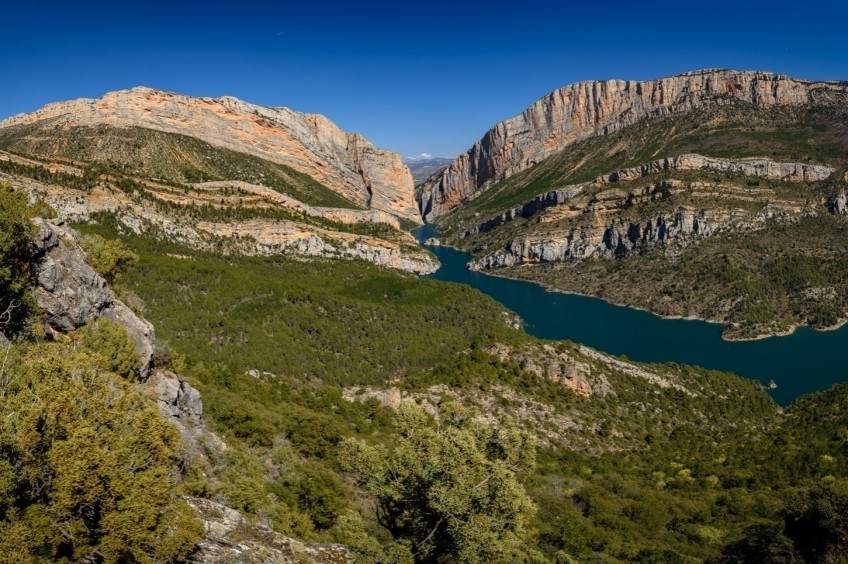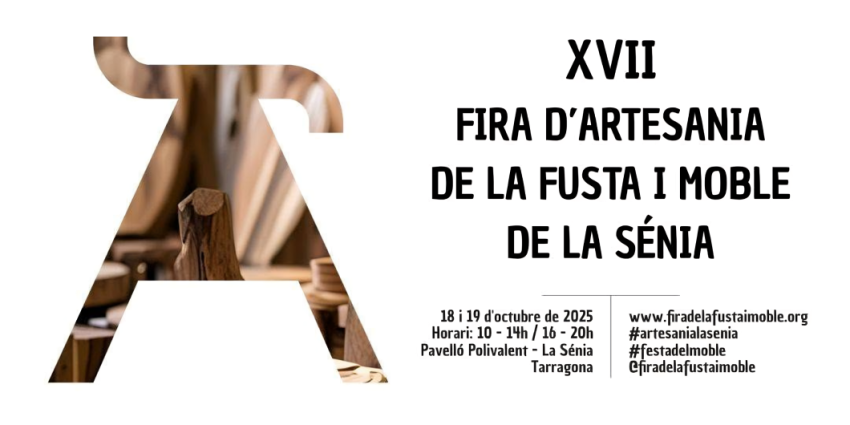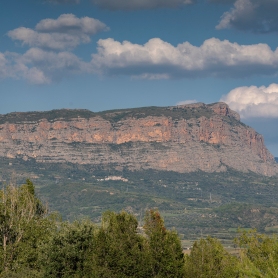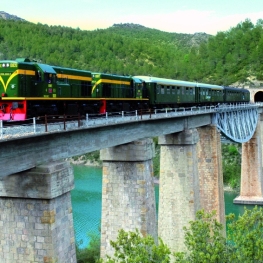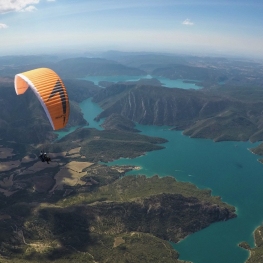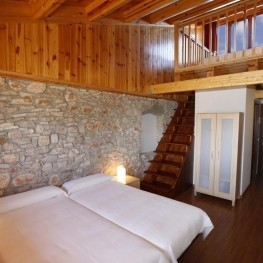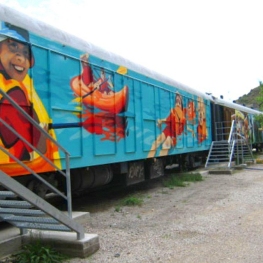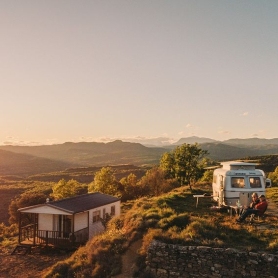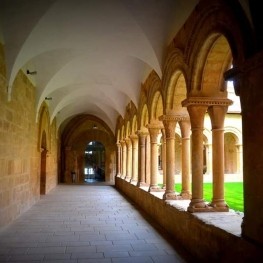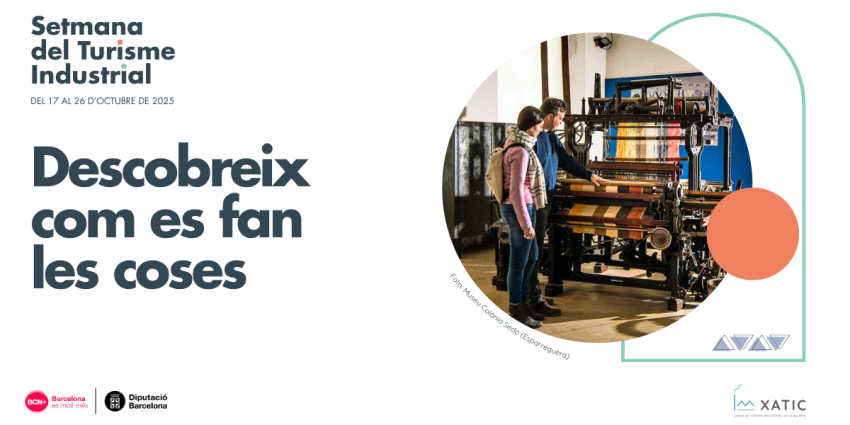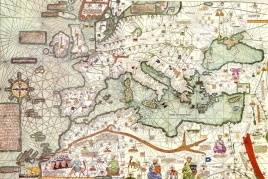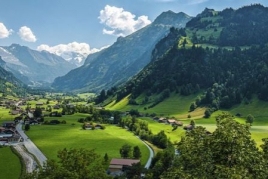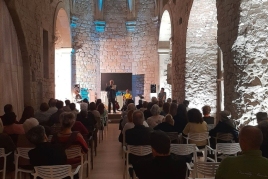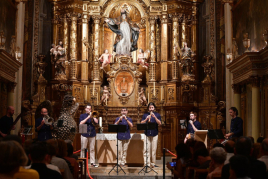Congost de Montrebei and Montfalcó walkways
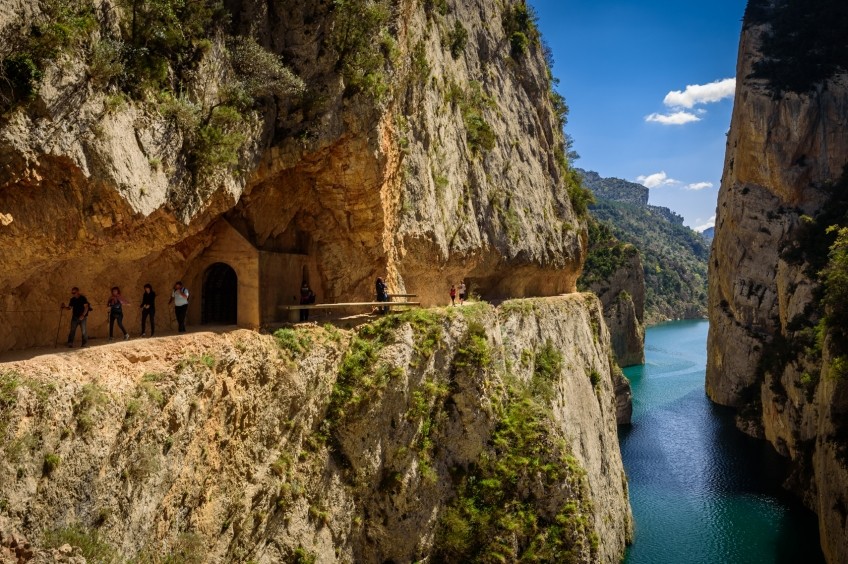
The gorge of Mont-rebei is the last great narrow passage that remains almost intact in Catalonia. The rest of other large gorges have dams, reservoirs, roads, etc. Therefore, the Mont-rebei gorge is almost a miracle that "virgin" has arrived to this day. In fact, the threats of building a dam are constant. In addition, the views from Montfalcó allow you to contemplate a sensational panorama of the Montsec, passing through two vertiginous walkways. In sum, a very interesting combination of a place where we often pass by to go to the Pyrenees.
Difficulty: easy The route to Congost is affordable for almost everyone. The climb to Montfalcó could perhaps be described as moderate difficulty since it is longer and has more unevenness, but is perfectly conditioned. Only the Montfalcó catwalks are advised against in case of dizziness as it passes through very aerial stairs.
Elevation: 854 meters accumulated ascent.
Time: between 6h and 7h according to rhythm
Kilometers: 17 km
Variants: traditionally this route has also been made from the hermitage of La Pertusa, in the Noguera, facing the gorge in the north direction to the suspension bridge. If we have the option of leaving a car on each side of the gorge it may be a good idea to start at Montfalcó and finish at the Masieta car park. If you still want more, you can go to Montfalcó and then to Pertusa.
Observations: the GPS track does not coincide with the real road in the narrowest section of the Mont-rebei gorge, since at this point so encased there is little coverage (no loss).
We leave from the Masieta car park, on the northern slope of Montsec. To arrive we will need to climb up to the Montañana Bridge and there take the road to Tremp. After crossing the river we will see a turnoff to the right that indicates the Mont-rebei gorge. We follow this paved road for 8 kilometers and we will find the entrance to the parking lot where we will have to ceremoniously pay € 4 to enter. (We can also park on the side of the road and do the piece on foot).
From the parking lot we go out the side of the information booth with a forest trail marked from the beginning with GR marks and enough indicators and walkers so that you can store the GPS in your pocket throughout the route.
After a few steps of having started, we reach a fork. If the level of the Canelles swamp is low, the path on the right will save us some unevenness and can be a bit more direct. But the day we went you could only go through the path on the left, the so-called Camino de los Canchales.
We continue there and the road will look for the margin of the swamp to continue towards the Mont-rebei gorge. To our right (if the swamp is full), we will see how the road sinks in the water and on the other side, the Girbeta Castle rises , which later we will see that it is placed at a strategic point.
We arrive at the highest point of this path of the courts and now we lower our head with a considerable slope towards the Barranc Fondo. The road has a fairly solid cobblestone that precisely prevents the entire route from becoming a great tartera. After all the way, we coincide with the other route that came from the swamp and we passed the suspension bridge over one end of the swamp. We continue there and start to line the Mont-rebei gorge, with the first sections between the rock. Until the entrance of the gorge we will have about 30-40 minutes.
From here the route is very spectacular. The construction of the dam of the Canelles swamp forced to open a path on foot in the 80s to be able to connect the two sides of the mountain that separated the swamp. When the level of the swamp is quite low, you can see a second road excavated a few meters below and that was the original route of the Mont-rebei gorge. It is currently in the water when the swamp is quite full but if there is little water, you can first cross the gorge on one path and return on the other.
The gorge has very vertical cliffs that lead more than 500 meters. The Noguera Ribagorçana has been in charge of digging this almost impossible scar on the Montsec. The road inside the gorge is wide enough that there are no problems when you meet other people. In addition, there is a safety hand cable in case you don't have them all, but we will practically not use it. It is worth stopping a few moments in a bank and contemplate the row of people traveling this unpublished path.
Once the gorge is over, the Noguera and the Canelles swamp opens before us . The road climbs moderately and would go up to the Sierra del Mill to end at the famous hermitage of La Pertusa (all with GR marks). We will leave it later we find the indicator that marks the route to the Natural Way of Montfalcó (you will see that naturally it has little) and that it deviates to the right and begins to descend with steps. So far we have been about 4 kilometers and to reach the hostel of Montfalcó we will have to do about 4 more kilometers.
We go down this path with several wooden steps until we reach the level of the Canelles swamp. We cross the reservoir through one of its narrowest points, the Seguer Gorge, where a second suspension bridge that connects Catalonia with Aragon has been installed. From here, the view of the southern slope of the Mont-rebei gorge is impressive.
Already in the Aragonese slope, we begin a section of moderate ascent by a rocky zone. Again, wooden steps have been installed that will be good for us to follow since the terrain is very rocky and the rock is quite smooth. But for the most purist mountaineers, perhaps you will see that this route is very artificial. The road winds until it reaches a point on the ridge where we find another of the great attractions of the route: the Montfalcó walkways.
These are two flights of wooden stairs that go up a cliff that would only be reserved for climbers. The spectacular nature of these scales that completely occupy the cliff can once again hurt the sensibility of the most purist mountaineers, but the truth is that they are a claim for many tourists and hikers.
On the way to Montfalcó we will have to make the two walkways down, with which, we will have an important patio at our feet and perhaps it is not the best route for those who suffer from vertigo. Once the first section has been passed, we will continue along the well-marked road, first down and then up until we reach the second section after about 15 minutes. This second walkway is less vertical than the first and crosses a cliff on the descent. Of course, if we look below, we will see that we have the swamp at our feet.
Once the second flight of stairs is over, we will now head up the road that goes up to the Montfalcó shelter. This stretch of about 45 minutes and just over 2 kilometers saves a height of about 300 meters. It is therefore the most important climb of the entire route, and without being an extraordinary slope, it will make us sweat especially if we go in summer.
The natural road of Montfalcó finally becomes natural after having passed the two walkways and starts planning with a gentle climb through a typically indoor pine forest. After a while you reach the Corral de la Viña, an old building in the middle of the forest. Half a kilometer beyond it passes through the Barranco de la Sierra and the road begins to climb decidedly until it reaches the Montfalcó Fountain.
From there, there is a forest trail that would go up more smoothly to the lodge, and if we continue along the road from where we came, we will arrive at the hostel of Montfalcó in a matter of 15 minutes. Once here, it is essential to visit the hermitage of Santa Quiteria, about 10 minutes from the hostel.
We take a path on the left that goes back to the crest of the Santa Quiteria mountain range, where we find a hermitage in an almost impossible place (it reminds us a lot of the hermitage of Pertusa). Both the place where the temple is located and the views towards the Mont-rebei gorge make it essential to stop for a few moments to contemplate the show. And to the other side, the swamp of Canelles dominates an almost virgin natural space in which there is practically nothing. No farmhouses, no towns, not even forest tracks. Everything dominates the silence.
Returning from the hermitage of Santa Quiteria, we will undo the way to the lodge, then to the stairs - now up - until we find the path of the Mont-rebei gorge. As we have said, if the level of the swamp is low, you should take the old road, which deviates a few meters below the current one.
Authorship text and photographs: Sergi Boixader
You may also be interested in: Walking routes in Catalonia | Go hiking and get to know Catalonia on foot | Water and nature to enjoy with the five senses
What to do
Espai Natura Congost de Mont-rebei
Sant Esteve de la SargaReserve protects almost 600 hectares in the Catalan side: the gorge itself…
Where to eat
Hotel-Restaurant Port d'Àger
Àger (a 2.2 Km)The hotel is designed to accommodate families, friends, and corporate groups, as…
El Dien Restaurant
Vallfogona de Balaguer (a 28.2 Km)We love cooking, and we love our customers to receive on the…
Where to sleep
Hotel-Restaurant Port d'Àger
Àger (a 2.2 Km)The hotel is designed to accommodate families, friends, and corporate groups, as…
Casa de colònies Vagons d’Àger, Fundesplai
Àger (a 7.3 Km)Vagones de Àger is located in the municipality of Àger, in the…
Eco Càmping Terra del Congost
Tremp (a 5.7 Km)Terra del Congost is an old farm converted into an Eco Camping…
Monestir de les Avellanes
Os de Balaguer (a 14.2 Km)An ancient 12th century abbey adapted to the needs of the 21st…

